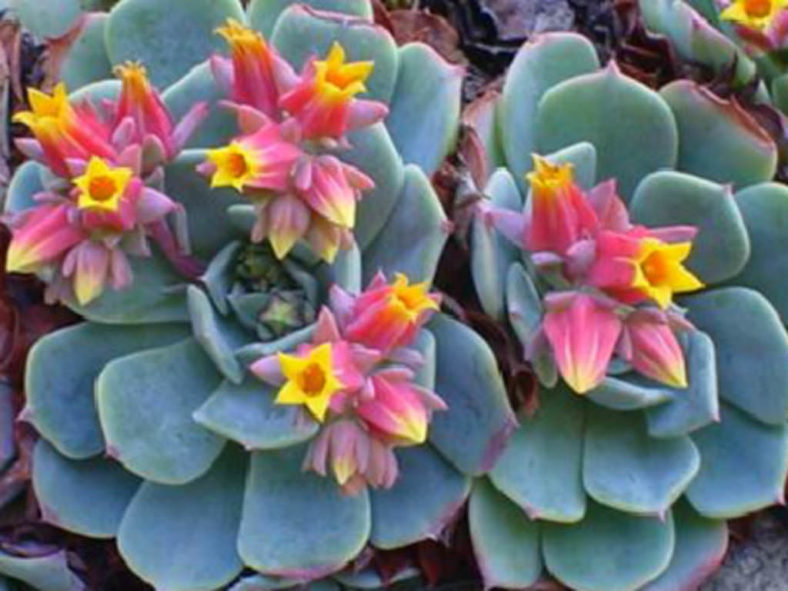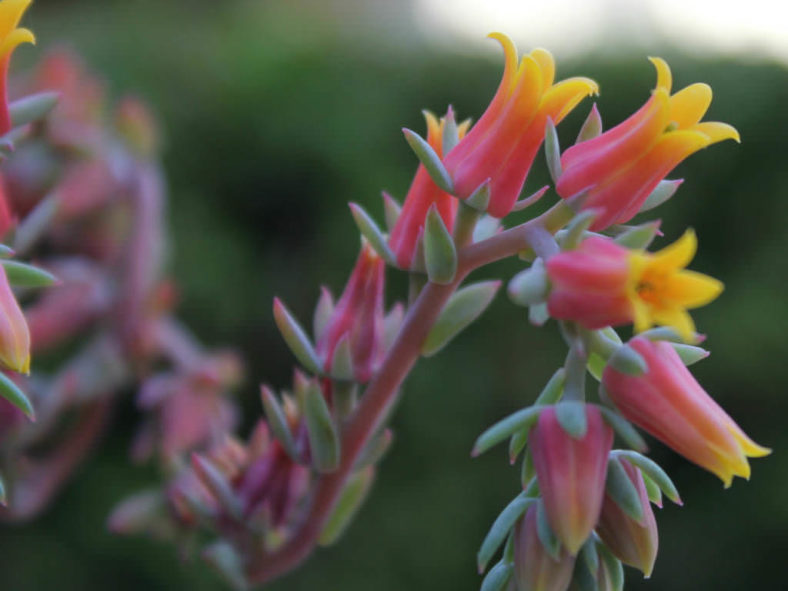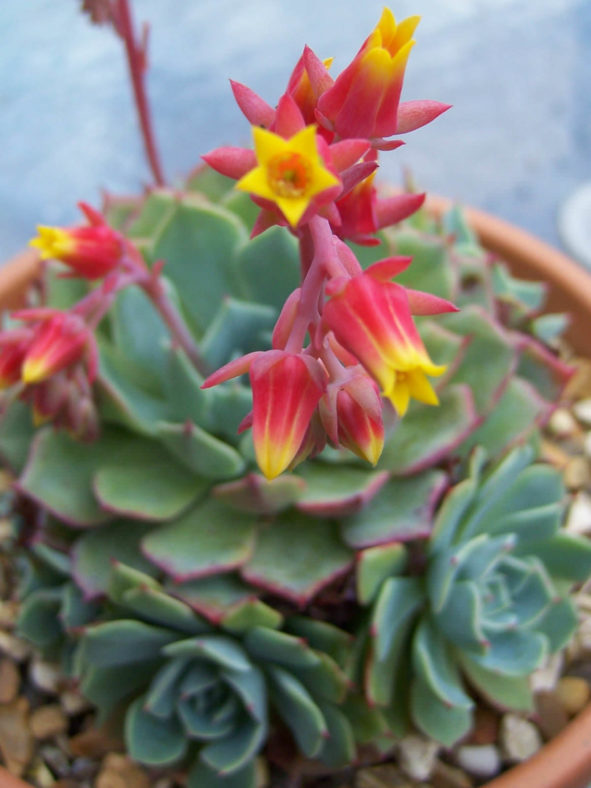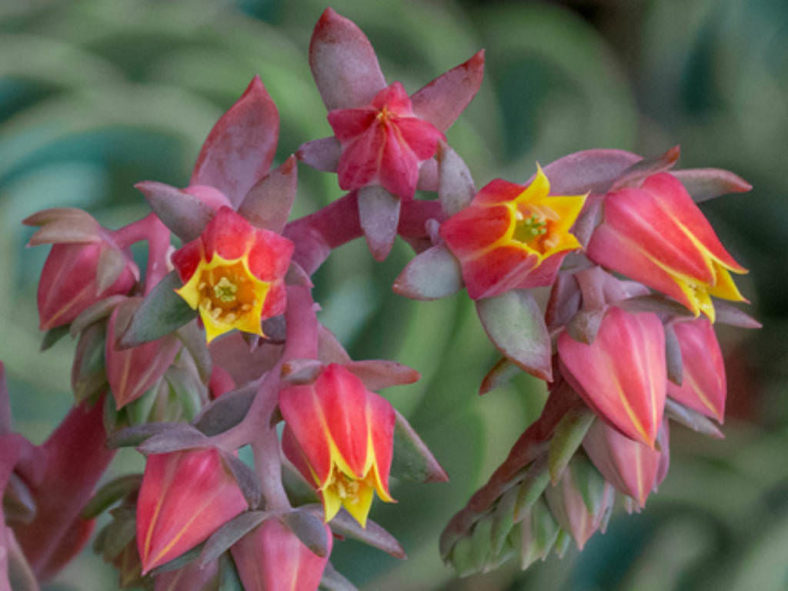Scientific Name
Echeveria elegans Rose
Common Name(s)
Mexican Snow Ball, Mexican Snowball, Mexican Gem, White Mexican Rose, Hens and Chicks, Pearl Echeveria
Synonym(s)
Echeveria tinctoria, Echeveria tinctorum
Scientific Classification
Family: Crassulaceae
Subfamily: Sedoideae
Tribe: Sedeae
Subtribe: Sedinae
Genus: Echeveria
Origin
Echeveria elegans is native to semi-desert habitats in Mexico.
Flower
Color: Pink and yellow
Bloom Time: Late winter and spring
Description
Echeveria elegans is a clump-forming succulent with stemless or short-stemmed rosettes of thick, fleshy, pale blue-green leaves. It grows up to 4 inches (10 cm) tall and 20 inches (50 cm) wide.
The rosettes bear slender, pink, up to 10 inches (25 cm) long stalks of pink flowers with yellow tips that appear in late winter and spring.

How to Grow and Care
Most common Echeveria species are not complicated succulents to grow, provided you follow a few basic rules. First, be careful never to let water sit in the rosette as it can cause rot or fungal diseases that will kill the plant. Additionally, remove dead leaves from the bottom of the plant as it grows. These dead leaves provide a haven for pests, and Echeverias are susceptible to mealy bugs. As with all succulents, careful watering habits and plenty of light will help ensure success.
Most Echeveria can be easily propagated from leaf cuttings, although some are better from seeds or stem cuttings. To propagate a leaf cutting, place the individual leaf in a succulent or cacti mix and cover the dish until the new plant sprouts. Repot as needed, preferably during the warm season. To repot a succulent, ensure the soil is dry before repotting, then gently remove the pot.
See more at How to Grow and Care for Echeveria.
Links
- Back to genus Echeveria
- Plantpedia: Browse flowering plants by Scientific Name, Common Name, Genus, Family, USDA Hardiness Zone, or Origin
Photo Gallery
Click on a photo to see a larger version.




